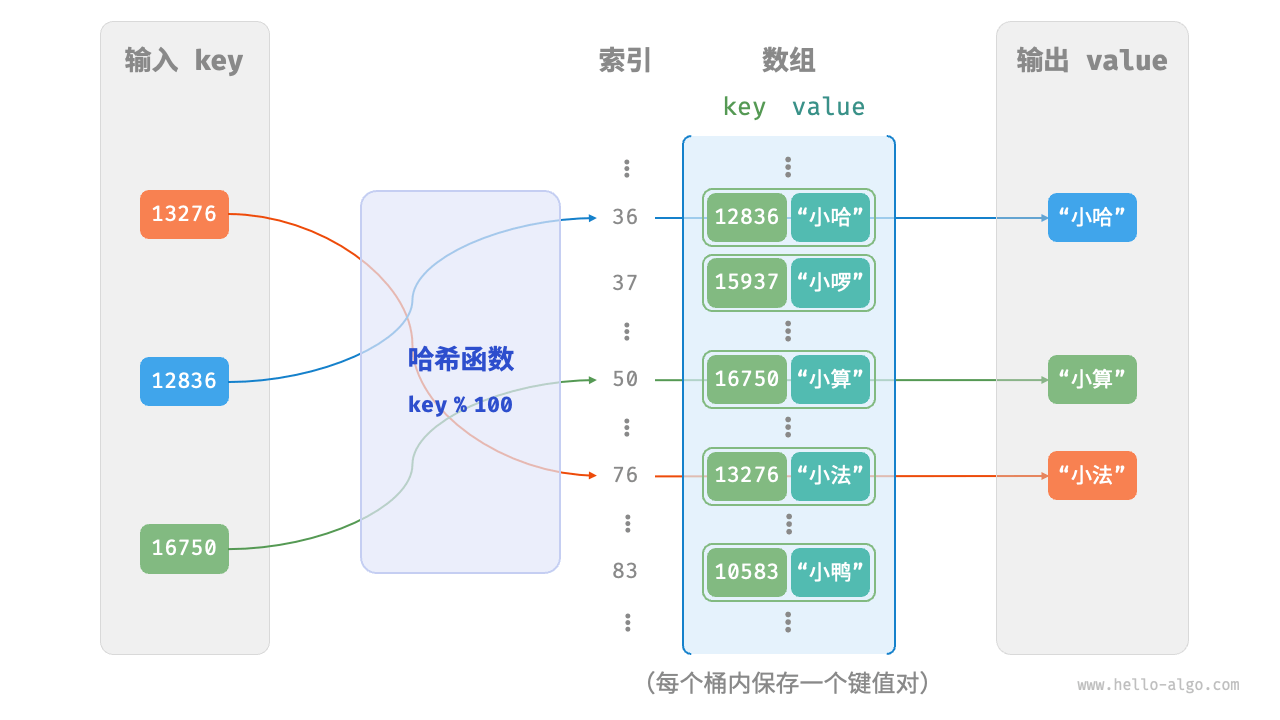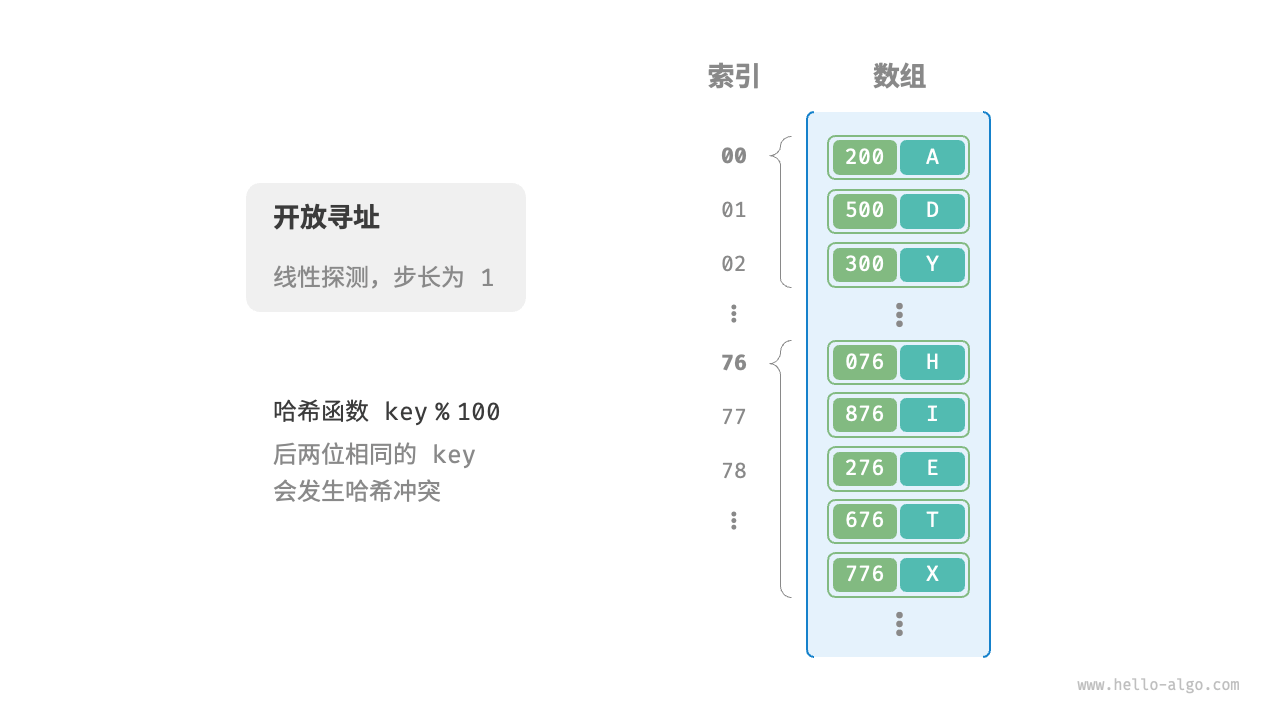哈希表¶
基于数组实现的哈希表
数组中的每一个空位被称之为桶(bucket),可以存储一个键值对
class Pair:
def __init__(self, key: int, val: str):
self.key = key
self.val = val
通过哈希函数计算出key值对应的数组索引,即桶的位置
class ArrayHashMap:
def __init__(self):
"""构造方法"""
# 初始化数组,包含 100 个桶
self.buckets: list[Pair | None] = [None] * 100
def hash_func(self, key: int) -> int:
"""哈希函数"""
index = key % 100
return index
def get(self, key: int) -> str:
"""查询操作"""
index: int = self.hash_func(key)
pair: Pair = self.buckets[index]
if pair is None:
return None
return pair.val
def put(self, key: int, val: str):
"""添加操作"""
pair = Pair(key, val)
index: int = self.hash_func(key)
self.buckets[index] = pair
def remove(self, key: int):
"""删除操作"""
index: int = self.hash_func(key)
# 置为 None ,代表删除
self.buckets[index] = None
两个不同的 key 可能在经过哈希函数后得到相同的数组索引,导致查询结果出错,则称之为哈希冲突(hash collision),为了减少哈希冲突的发生,除了扩容之外,需要提高哈希算法的均匀分布性,但理论上是不可避免的,为保证发生哈希冲突时也可以正常工作,有两种处理方式,链式地址和开放寻址
Java 和 Go 都采用了链式地址的方式
Python 采用了开放寻址的方式


